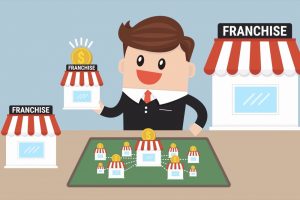How CloudFran Technology Helps Profitability and Efficiency
The integration of technology can significantly enhance the efficiency, productivity, and profitability of franchises. Here are a few ways technology can be beneficial:
- Point of Sale (POS) Systems: Modern POS systems do more than just process transactions. They can also track inventory, analyze sales patterns, manage employees, and integrate with other business systems. This allows franchise owners to streamline operations, reduce errors, and make data-driven decisions.
- Digital Marketing Tools: Online advertising platforms, social media management tools, email marketing software, and SEO tools can all help franchisees attract more customers and build stronger relationships with them. This can lead to increased sales and customer loyalty.
- Online Ordering and Delivery Platforms: For food service franchises, integrating with online ordering and delivery platforms can greatly expand their customer base and increase sales. Even for other types of franchises, offering online sales or booking can provide a more convenient customer experience and boost revenue.
- Franchise Management Software: These are systems designed specifically to help manage the unique needs of franchises. They can help with things like centralized marketing, reporting, operational consistency, and communication between the franchisor and franchisees.
- Training Platforms: Online training platforms can make it easier and more cost-effective to train staff. They can ensure consistent training across locations and allow employees to learn at their own pace.
- Customer Relationship Management (CRM) Systems: CRM systems can help franchises manage customer interactions, track customer preferences and behavior, and tailor marketing efforts. This can improve customer satisfaction and drive repeat business.
- Automated Accounting Software: This software can automate various accounting tasks like invoicing, payroll, tax preparation, and financial reporting. It can save time, reduce errors, and provide franchise owners with a clearer picture of their financial situation.
- Communication and Collaboration Tools: Tools like Slack, Microsoft Teams, or Zoom can facilitate communication and collaboration between franchise locations, as well as between franchisees and franchisors. This can lead to more efficient problem-solving, knowledge sharing, and a stronger sense of community within the franchise network.
- AI and Machine Learning: Advanced technologies like AI and machine learning can help franchises with predictive analytics (forecasting sales, for instance), personalizing marketing efforts, and automating customer service via chatbots.
- Supply Chain Management Systems: These systems can help manage and optimize the supply chain, ensuring timely and cost-effective procurement of inventory.
While adopting technology can require an investment, the efficiency gains, cost savings, and potential for increased sales often make it a worthwhile investment. It’s important for franchisees to choose technology solutions that fit their specific needs and to provide sufficient training so staff can effectively use these tools.







